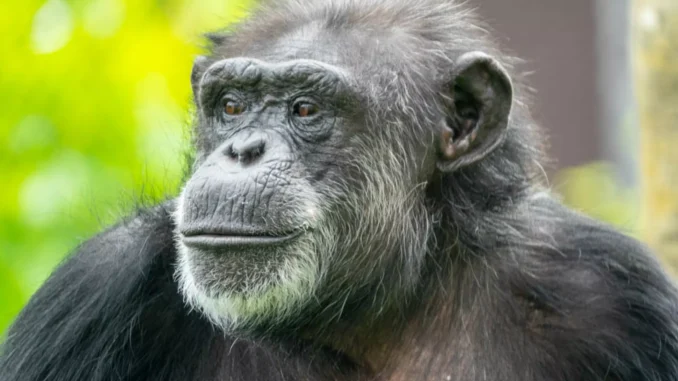
Throughout the animal kingdom, numerous species exhibit fascinating behaviors that highlight their ability to treat and prevent illnesses. This phenomenon, known as zoopharmacognosy, showcases the ingenuity and adaptability of animals in utilizing their natural environment to maintain health. Here are five clever animals that stand out for their self-medicating behaviors:
1. Chimpanzees: Nature’s Herbalists
Chimpanzees are known for their remarkable intelligence, which extends to their health practices. In the wild, these primates have been observed consuming plants with medicinal properties to combat parasites and other ailments. For instance, chimpanzees in Tanzania’s Gombe National Park chew the bitter pith of the Vernonia plant, which contains compounds effective against intestinal parasites. They also fold and swallow whole leaves of specific plants without chewing. This behavior is thought to help physically scrape intestinal parasites from their digestive tract. By observing older members of their groups, younger chimpanzees learn which plants to use, highlighting the role of cultural transmission in their health practices.
2. Monarch Butterflies: Medicinal Milkweed
Monarch butterflies demonstrate an incredible ability to protect their offspring from disease. Female monarchs infected with the Ophryocystis elektroscirrha parasite lay their eggs on milkweed plants that are high in toxic compounds called cardenolides. These chemicals help reduce parasite infections in the caterpillars that hatch and feed on the plants. Interestingly, uninfected monarchs show no preference for specific milkweed types, suggesting that the behavior is a targeted response to infection. This selective use of medicinal plants underscores the butterflies’ innate capacity for disease management.
3. Elephants: Pregnancy Preparations
Elephants have been observed engaging in behavior that resembles herbal medicine, particularly in relation to reproduction. Pregnant elephants in Kenya have been seen eating leaves from the Boraginaceae tree shortly before giving birth. Local communities recognize this plant for its ability to induce labor, and elephants appear to use it for the same purpose. While the exact mechanism isn’t fully understood, the behavior suggests that elephants have an intuitive understanding of the medicinal properties of plants in their habitat.
4. Honeybees: Propolis Power
Honeybees protect their hives from disease by using a natural substance called propolis. Propolis is a resin-like material that bees collect from tree buds and other botanical sources. It has antimicrobial properties and is used to seal cracks in the hive, creating a sterile environment that prevents the spread of harmful bacteria and fungi. Studies have shown that bees living in hives with higher levels of propolis are less prone to infections and exhibit stronger immune responses. This behavior not only protects individual bees but also ensures the health of the entire colony.
5. Woolly Bear Caterpillars: Toxic Treats
Woolly bear caterpillars, found in North America, have a unique way of combating parasitic infections. When infected by parasitic flies, these caterpillars consume toxic plants such as alkaloid-rich hemlock or asters. The chemicals in these plants are toxic to the parasites but harmless to the caterpillars in small doses. By selectively eating these plants, the caterpillars increase their chances of survival and continuing their life cycle. This behavior demonstrates an impressive level of adaptation in managing health challenges.
The Broader Implications of Zoopharmacognosy
The self-medicating behaviors of animals offer valuable insights into the natural world and its potential for human medicine. Observing how animals use plants and other natural substances to treat ailments has inspired research into new drugs and therapies. For example, studying chimpanzees’ use of Vernonia has led to investigations into its antiparasitic properties for human medicine.
These behaviors also highlight the deep interconnectedness between animals and their ecosystems. The ability of animals to self-medicate depends on biodiversity and the availability of medicinal plants. Habitat destruction and environmental changes threaten not only wildlife but also the potential loss of natural remedies yet to be discovered.
In conclusion, animals like chimpanzees, monarch butterflies, elephants, honeybees, and woolly bear caterpillars showcase the remarkable capacity of nature to address health challenges. Their ingenuity in self-medication serves as a testament to the resilience and adaptability of life on Earth, as well as a reminder of the importance of preserving biodiversity for future generations.
Leave a Reply